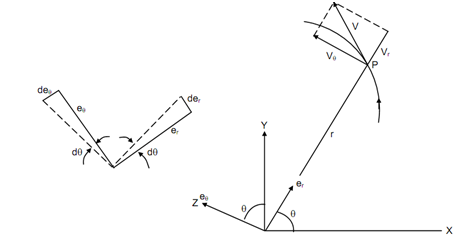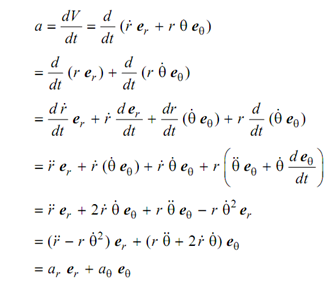General Method for Velocity and Acceleration:
We begin with plane curvilinear motion utilizing polar coordinates to mention the position vector 'r' and its angular coordinate 'θ' calculated from a fixed reference axis as illustrated in .Assume er & eθ unit vectors in radial & transverse directions respectively.
These unit vectors contain positive directions in increasing r and θ. The vectors er and eθ are parallel to the positive senses of Vr & Vθ. Both of these unit vectors shall swing by the angle in the time dt. As illustrated in figure, their tips move by the distances | d er = 1| = 1 × dθ = dθ in the direction of eθ, and by deθ = 1 × d θ = d θ in the direction opposite to that of er. Hence,


The velocity of a particle P which contain position vector 'r' is given by following

here Vr & Vθ are the components of velocity in radial direction & transverse direction. The acceleration of particle P is given by following

here ar represents radial component and aθ represents transverse component of acceleration.

And

Here,
 → Acceleration of slider along with slotted link,
→ Acceleration of slider along with slotted link,
 → Centripetal acceleration,
→ Centripetal acceleration,
 → Tangential component of acceleration, and
→ Tangential component of acceleration, and
 → Coriolis' component of acceleration.
→ Coriolis' component of acceleration.